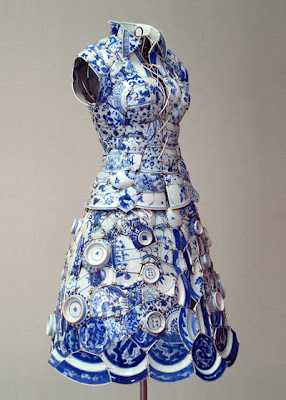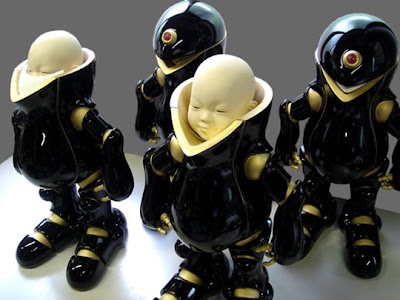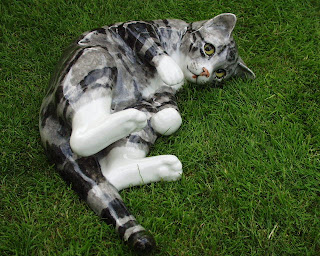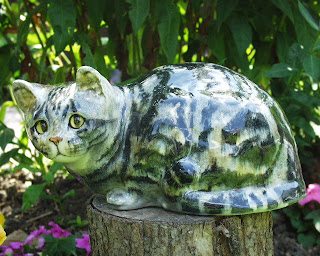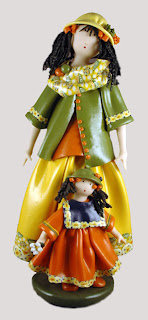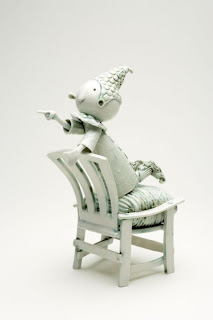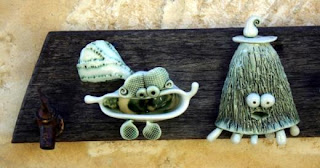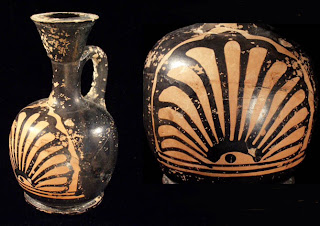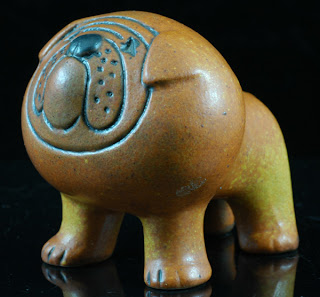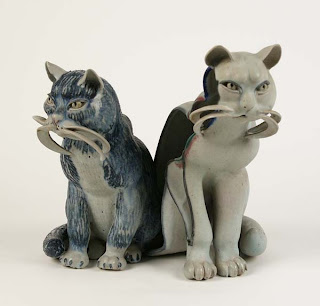There are three basic categories of forming techniques used in making pottery -
handwork, wheelwork, and slipcasting. It's very common for wheelworked pieces to be finished by handwork techniques. Slipcast pieces tend not to be, as that negates one of the prime advantages of casting.
Handwork methods are the most primitive and individual techniques, where pieces are constructed from hand-rolled coils, slabs, ropes and balls of clay, often joined with a liquid clay slurry. No two pieces of handwork will be exactly the same, so it is not suitable for making precisely matched sets of items e.g. dinnerware. Doing handwork enables the potter to use their imagination to create one-of-a-kind works of art.
The potter's wheel can be used for mass production, although often it is employed to make individual pieces. A ball of clay is placed in the center of a turntable, called the wheel head, which is turned chiefly using foot power (a kick wheel or treadle wheel) or a variable speed electric motor. Oftentimes a disk of plastic, wood, or plaster is affixed to the wheel head and the ball of clay attached to the disk rather than the wheel head so as to facilitate easy removal of the finished piece. This disk is referred to as a bat. The wheel revolves rapidly while the clay is pressed, squeezed and pulled gently into shape. The process of pressuring the clay into a radial symmetry, so that it does not move from side to side as the wheel head rotates is referred to as "centering" the clay - usually the most difficult skill to master for beginning potters.
Wheel work takes a lot of technical ability, but a skilled potter can produce many virtually identical plates, vases or bowls in a day. Because of its nature, wheel work can only be used to initially create items with radial symmetry on a vertical axis. These pieces can then be altered by impressing, bulging, carving, fluting, faceting, slicing, and other methods to make them more visually interesting. Often, thrown pieces are further modified by having handles, lids, feet, spouts, and other functional aspects added using the techniques of handworking. There are two related techniques that improve repeatability of wheelwork. A jigger is a mould that is slowly brought down onto the outside of an object, whilst it is being turned on a wheel. A solid mould is used to form the inside of the piece. Similarly, a jogger is used to shape the inside of a piece, pressing the outside against a solid mold.
Although these techniques have been in use since the 18th Century, they are usually considered minor "industrial" methods by modern studio potters. There is contention among potters over whether a "jigged" piece can be considered hand produced.
Slipcasting is probably the easiest technique for mass-production, especially for shapes not easily made on a wheel. A liquid clay slip is poured into plaster moulds and allowed to harden slightly. This slip can be formulated to mature at a variety of temperatures. Once the plaster has absorbed most of the liquid from the outside layer of clay the remaining slip is poured back into the storage tub, and the item is left to dry. Finally the finished item is removed from the mould, "fettled" (trimmed neatly), and allowed to air-dry.
This method is commonly used for smaller decorative pieces, such as figurines, which have many intricate details. In the United States, moulds and their slipcast pieces are primarily an industrial product, and are usually called "ceramics" to distinguish them from other pottery.



